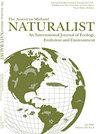曼尼托巴省小型白女士拖鞋(cypedium candidum)种群的气候和管理影响分析
IF 0.6
4区 环境科学与生态学
Q4 Agricultural and Biological Sciences
引用次数: 4
摘要
摘要小的白色女士拖鞋,塞浦路斯candidum,是一种罕见的多年生兰花,在加拿大的分布有限,作为孤立的种群出现在马尼托巴省南部和安大略省的残余高草草原上。该物种在两省都被列为濒危物种,并被联邦列为受威胁物种。尽管其地位,关于环境条件和土地管理如何影响该物种的种群规模和持久性的信息有限。我们使用了20年的监测数据,收集了加拿大最大人口的一个子集,以评估小白女士拖鞋对土地管理和天气的反应。长期监测表明,它们的数量正在下降,而且在目前的气候和管理制度下可能不会持续下去。温度似乎直接调节营养生长和开花。初春时的温暖气温有利于芽的萌发,但花期的高温则不利于植物生长,会减少营养生长和开花。相反,降水似乎对生长和开花有滞后效应。然而,雪深被确定为营养生长的积极影响,这表明早春的降水,当新梢出现时,对地上生长也很重要。一些放牧似乎通过减少竞争和遮阳对物种有益,但频繁的放牧可能会增加牛的消耗和践踏对个体直接伤害的风险,并且没有为个体提供足够的时间来恢复放牧事件。我们的发现增加了兰花保护和管理的知识,强调了长期监测在检测生命周期不稳定和种群波动的物种(如小白女士拖鞋)的种群趋势方面的重要性。本文章由计算机程序翻译,如有差异,请以英文原文为准。
A 20 y Analysis of Weather and Management Effects on a Small White Lady's-slipper (Cypripedium candidum) Population in Manitoba
Abstract. The small white lady's-slipper, Cypripedium candidum, is a rare perennial orchid with a limited distribution in Canada, occurring as isolated populations in remnant tallgrass prairie in southern Manitoba and Ontario. The species is listed as endangered in both provinces and as threatened federally. Despite its status, information on how environmental conditions and land management affect population size and persistence of this species is limited. We used 20 y of monitoring data collected for a subset of the largest population in Canada to evaluate the response of small white lady's-slipper to land management and weather. Long-term monitoring suggests the population is in decline and may not persist under the current climate and management regime. Temperature appears to regulate vegetative growth and flowering proximately. Warm temperatures early in the spring, when shoots are emerging, appear favored, but high temperatures during anthesis appear detrimental, reducing both vegetative growth and flowering. In contrast, precipitation appears to have a lag effect on growth and flowering. However, snow depth was identified as a positive influence on vegetative growth, suggesting precipitation in early spring, when shoots are emerging, is also important for above-ground growth. Some grazing appears to benefit the species presumably by reducing competition and shading, but frequent grazing may increase the risk of direct damage to individuals from cattle consumption and trampling and does not provide sufficient time for individuals to recover following grazing events. Our findings add to the knowledge of orchid conservation and management, highlighting the importance of long-term monitoring in detecting population trends in species with erratic life cycles and fluctuating populations, such as the small white lady's-slipper.
求助全文
通过发布文献求助,成功后即可免费获取论文全文。
去求助
来源期刊

American Midland Naturalist
环境科学-生态学
CiteScore
1.20
自引率
0.00%
发文量
38
审稿时长
18-36 weeks
期刊介绍:
The American Midland Naturalist has been published for 90 years by the University of Notre Dame. The connotations of Midland and Naturalist have broadened and its geographic coverage now includes North America with occasional articles from other continents. The old image of naturalist has changed and the journal publishes what Charles Elton aptly termed "scientific natural history" including field and experimental biology. Its significance and breadth of coverage are evident in that the American Midland Naturalist is among the most frequently cited journals in publications on ecology, mammalogy, herpetology, ornithology, ichthyology, parasitology, aquatic and invertebrate biology and other biological disciplines.
 求助内容:
求助内容: 应助结果提醒方式:
应助结果提醒方式:


